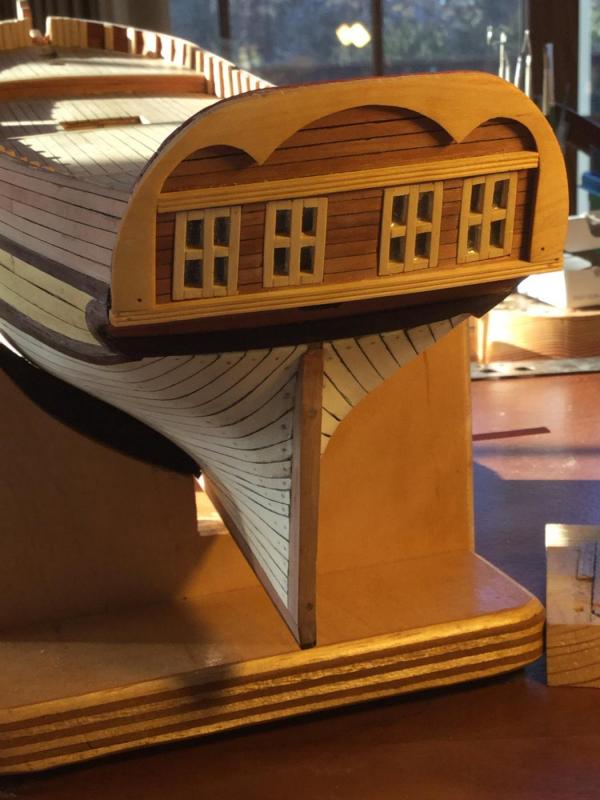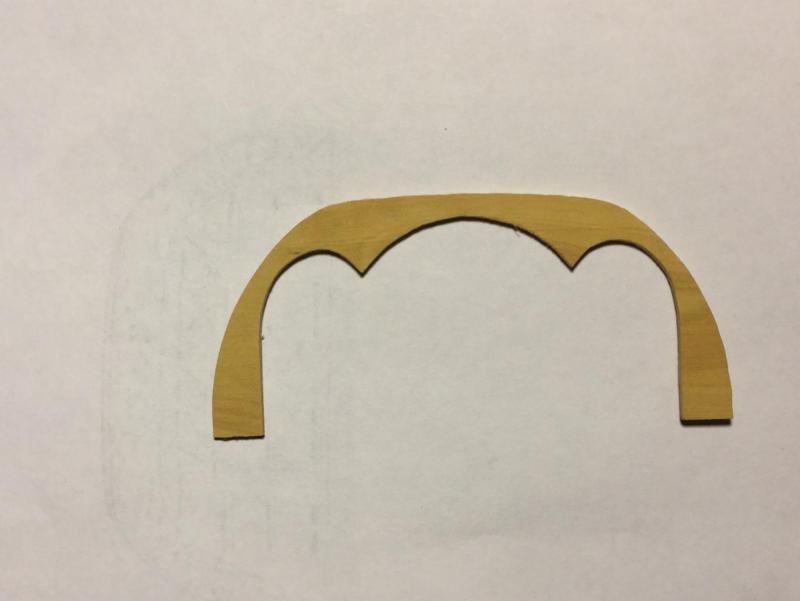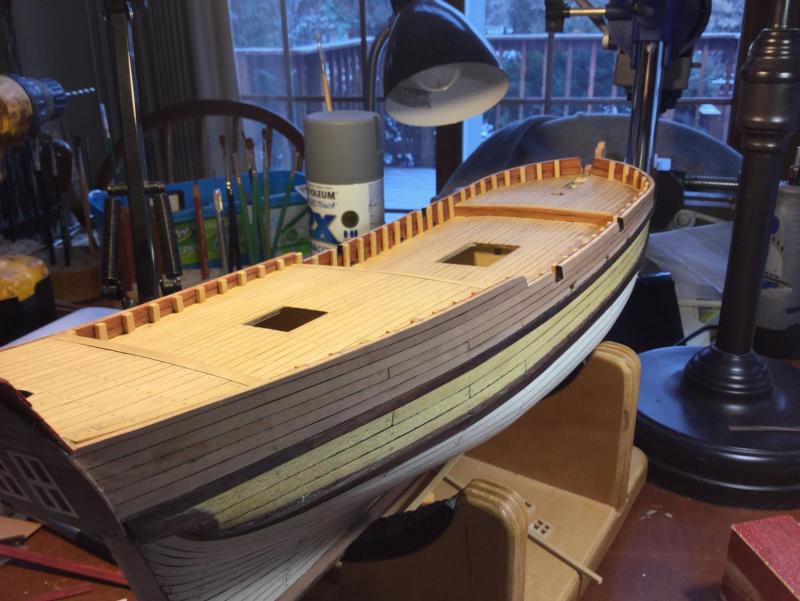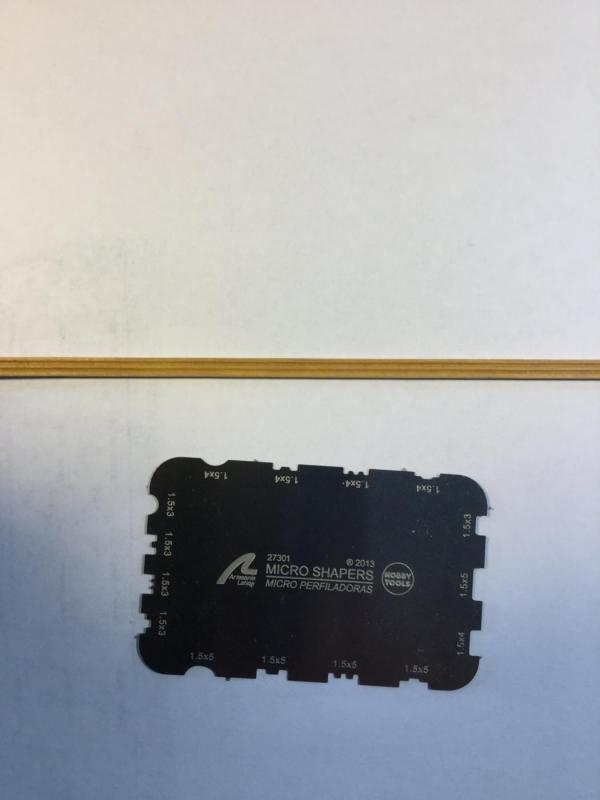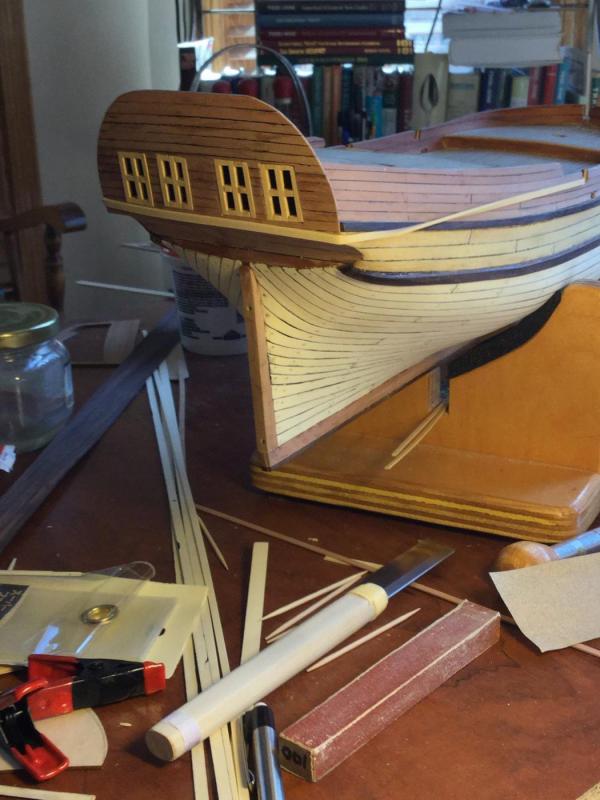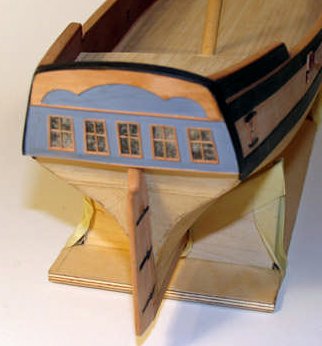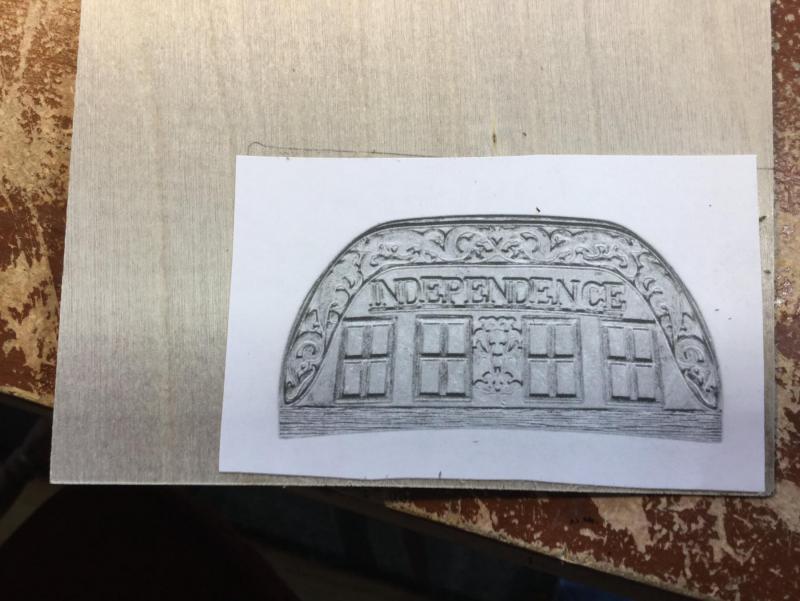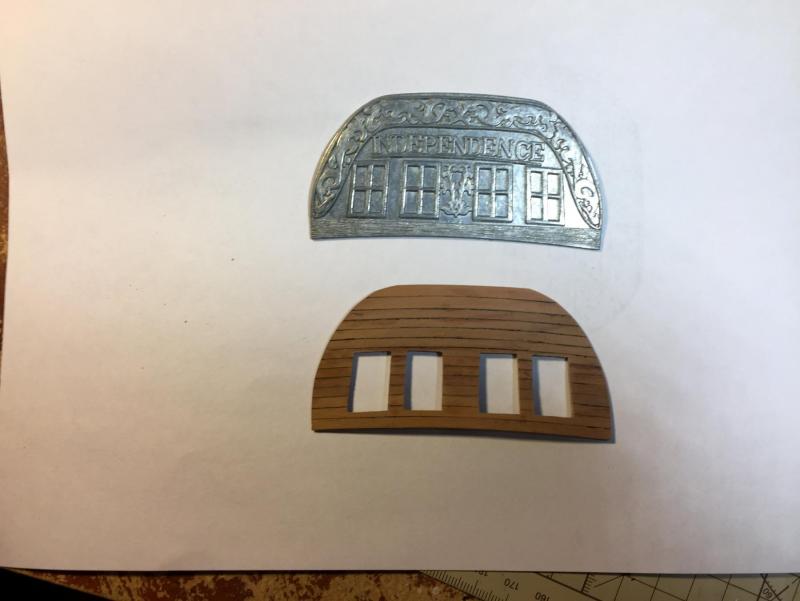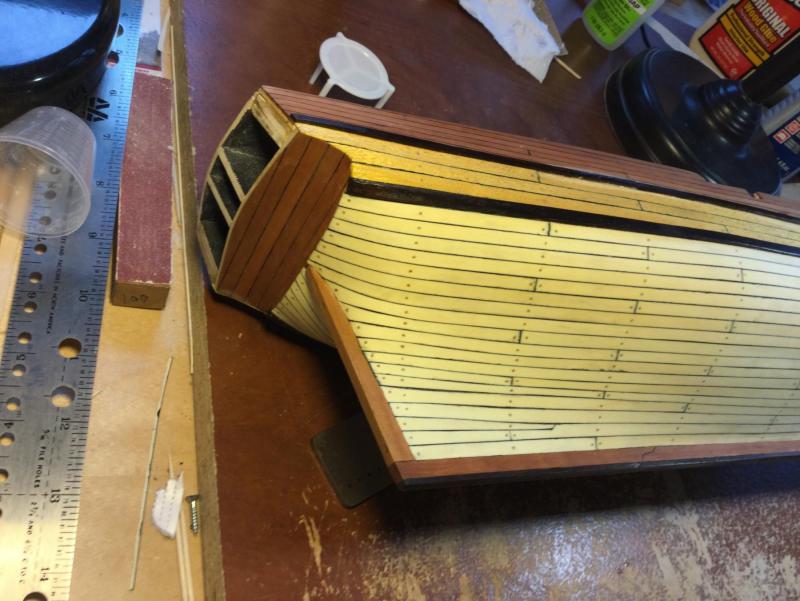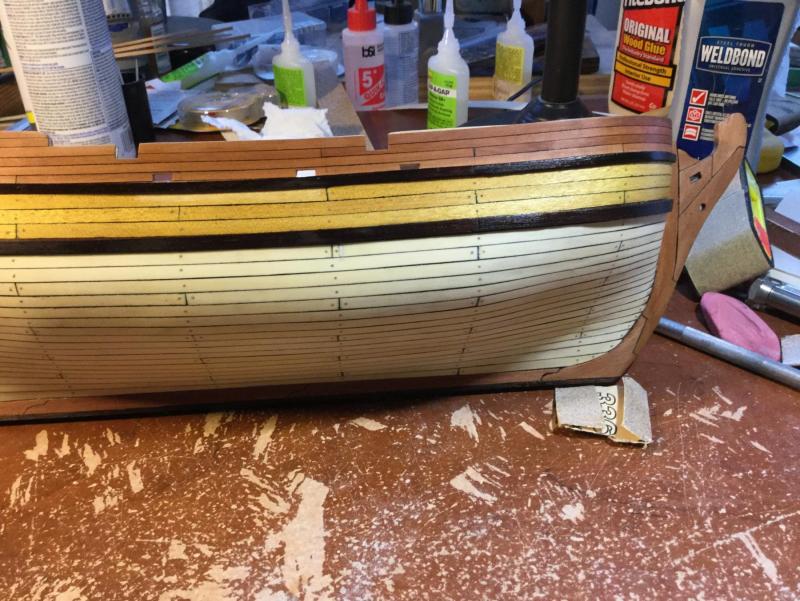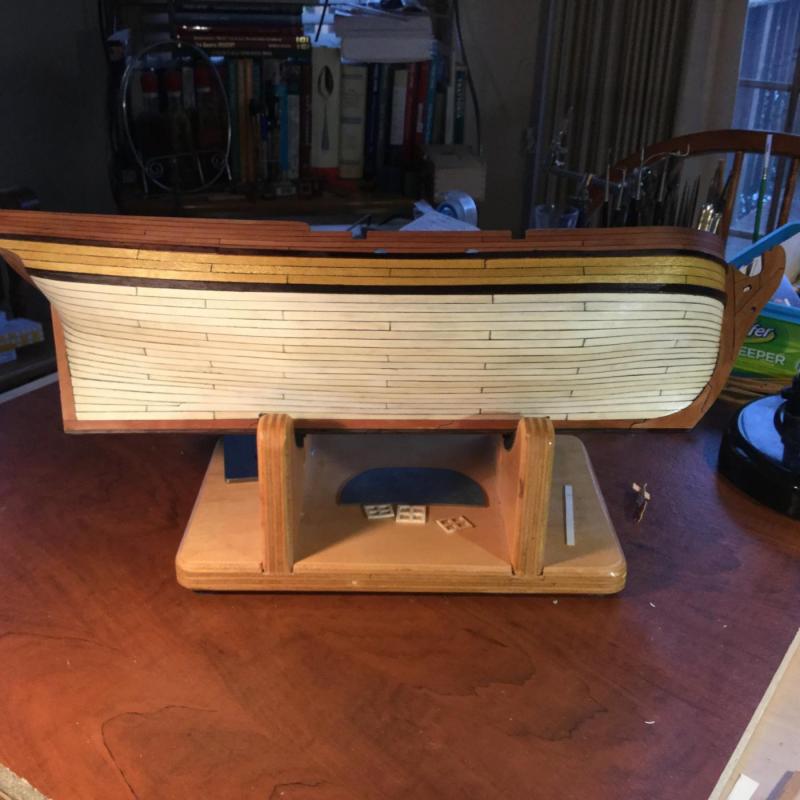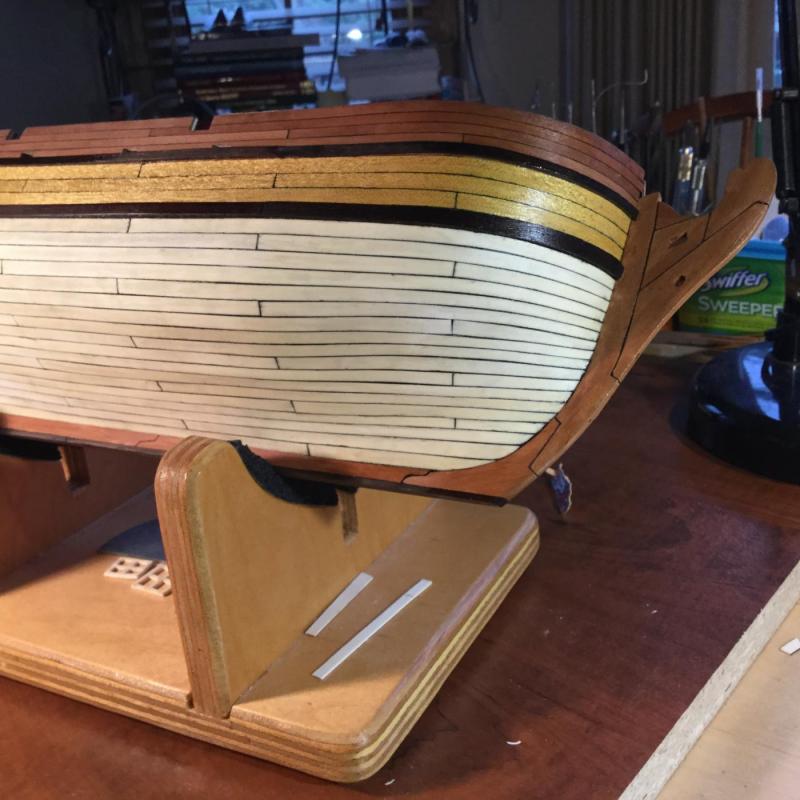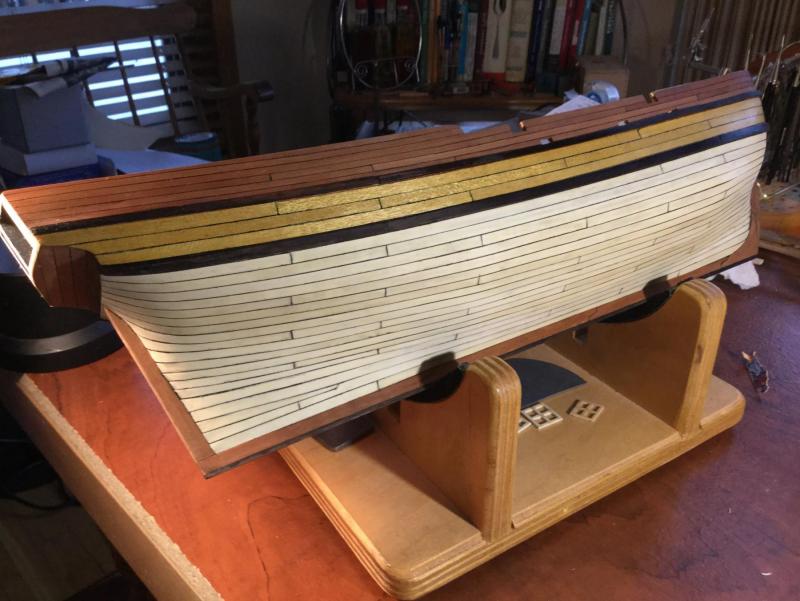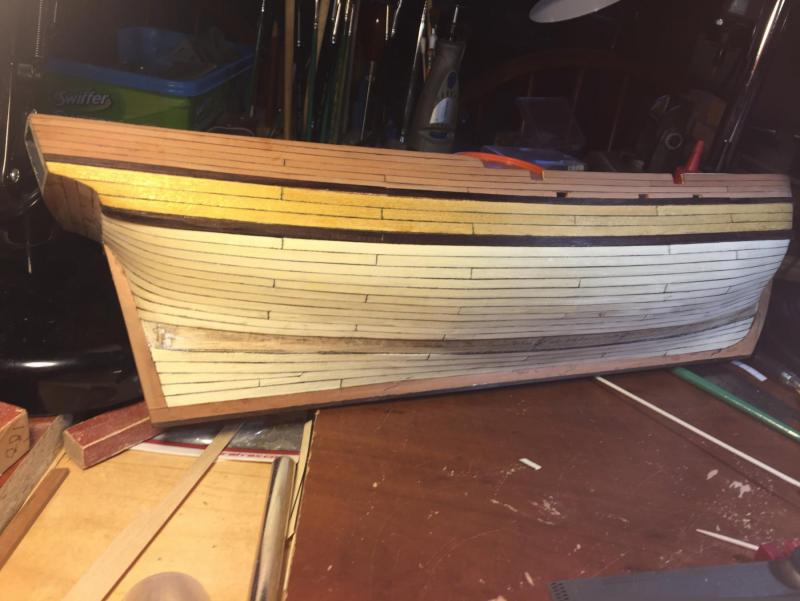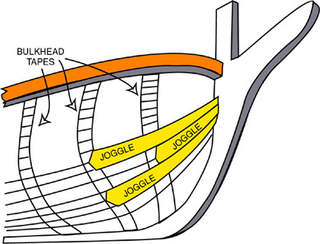-
Posts
1,811 -
Joined
-
Last visited
Content Type
Profiles
Forums
Gallery
Events
Everything posted by DocBlake
-
I installed the moldings and the fascia to the transom. I still need to do some treenailing back there and install the taff rail, but the rail will come after the main rails are fitted to the bulwarks. The transom is jazzed up a bit, but still relatively simple for this small, converted merchantman. I think I like the look as it is and won't add any more to it.
-
I planked the inboard surface of the transom with red heart. I'll trim it to final size tomorrow. I also drew up the design and cut out the boxwood fascia that will decorate the transom. This is similar to what was installed on my Patrick Henry AVS. Lastly, I installed all the bulwark frames. These are 3mm X 2mm boxwood pieces.
-
I'm at a decision point regarding the stern of the ship. I'm wrestling with the question of whether to add quarter badges or not. Obviously "Halifax" had quarter badges with pretty elaborate carvings, but "Hannah" did not. "Chaleur" had small parallelogram shaped lights, but no carvings, and even "Sultana" had quarter badges. Any opinions on which way to go?
-
Here's a shot of the transom temporarily held in place by a rubber band. The original stamped metal transom had an elaborate carved arch on it. I think that is overkill for a very small vessel that began life as a merchantman. Simpler is better. I plan two horizontal moldings of boxwood one above and one below the lights. I may also add a boxwood "trim piece" as decoration. The second photo shows how Clayton Feldman handled the problem of a simple transom
-
Thanks, Keith! I finished two of the four lights I need for the transom. The technique is pretty simple. here's a link to the page in my AVS log that explains it: http://modelshipworld.com/index.php/topic/10979-armed-virginia-sloop-patrick-henry-by-docblake-finished-lauck-street-shipyard-scale-132-pof-admiralty-style/page-15
-
I started work on the transom. I photocopied the horrible metal casting that was supposed to be the transom and rubber cemented it to a piece of 1/64" thick plywood. I was able to cut out the outline with a simple pair of scissors! I carefully removed the lights from the plywood and then removed the template and residual rubber cement. I planked the transom in swiss pear. next up are the lights (windows). I'll make them out of boxwood as I did in my AVS build,
-
I finished treenailing the hull. The pattern is stylized with treenails only on the bulkheads where butt joints in the planking occur. I'm still not sure whether to try to treenail the bulwarks, because they are very thin, and the risk of drilling through the inside surface from the outside is real. I'll have to think about it. I'm now planning my rebuild of the transom
-
At last post I had 3 strakes per side to install. These proved to be the most difficult of the entire job! The hull is finally planked! A major milestone. Overall I'm happy with the results, especially at the bow and amidships. The stern could have turned out better with more uniformity in the terminal widths of the planking, but I did the best I could given the weird geometry of the hull aft of the final bulwark. Next up is treenailing, then fairing the hull. Once that's all done I'll turn to completely rebuilding the transom and figure out a way to install the fashion pieces at the stern
-
This is a fun build, and you will enjoy it. I substituted a lot of wood in the kit and chose not to paint the model. That was a big part of the enjoyment for me. Good luck! I'll follow this with interest.
- 231 replies
-
- model shipways
- armed virginia sloop
-
(and 1 more)
Tagged with:
About us
Modelshipworld - Advancing Ship Modeling through Research
SSL Secured
Your security is important for us so this Website is SSL-Secured
NRG Mailing Address
Nautical Research Guild
237 South Lincoln Street
Westmont IL, 60559-1917
Model Ship World ® and the MSW logo are Registered Trademarks, and belong to the Nautical Research Guild (United States Patent and Trademark Office: No. 6,929,264 & No. 6,929,274, registered Dec. 20, 2022)
Helpful Links
About the NRG
If you enjoy building ship models that are historically accurate as well as beautiful, then The Nautical Research Guild (NRG) is just right for you.
The Guild is a non-profit educational organization whose mission is to “Advance Ship Modeling Through Research”. We provide support to our members in their efforts to raise the quality of their model ships.
The Nautical Research Guild has published our world-renowned quarterly magazine, The Nautical Research Journal, since 1955. The pages of the Journal are full of articles by accomplished ship modelers who show you how they create those exquisite details on their models, and by maritime historians who show you the correct details to build. The Journal is available in both print and digital editions. Go to the NRG web site (www.thenrg.org) to download a complimentary digital copy of the Journal. The NRG also publishes plan sets, books and compilations of back issues of the Journal and the former Ships in Scale and Model Ship Builder magazines.



